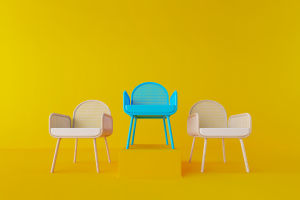Fabric of Modern Life
Textiles are an integral component of our daily lives, influencing a broad spectrum of activities from clothing to various industrial, medical, and domestic applications.
Among the diverse categories of textiles, woven fabric stands out due to its unique structure and extensive range of uses.
Basic Structure of Woven Fabric
Woven fabric is crafted from two primary yarns: warp and weft. The warp yarns run longitudinally, while the weft yarns extend transversely. The interlacing of these yarns imparts a distinctive structure and strength to the fabric. There are three fundamental types of woven fabric structures: plain, twill, and satin.
1. Plain Fabric: This type of fabric features a straightforward interlacing of warp and weft yarns, creating a simple, uniform texture. Its notable advantages include high strength and durability, making it ideal for everyday items like shirts and bed linens.
2. Twill Fabric: In twill fabric, the warp and weft yarns are interlaced at an angle to form a diagonal pattern. This design results in a fabric that is both soft and comfortable. Common examples include denim and khaki, which are prevalent in casual wear and workwear due to their robustness and distinctive texture.
3. Satin Fabric: Satin is characterized by the weft yarns being woven over the warp yarns to produce a smooth, shiny surface. This type of fabric is often used for high-end garments, such as evening gowns and luxury pajamas, because of its exceptional luster and softness.
Development of Woven Fabrics
The history of woven fabrics extends back to early textile technology. The origins of weaving can be traced to ancient Egypt, China, and India, where primitive hand looms were used to create intricate woven fabrics. Technological advancements significantly propelled the development of woven fabrics.
For instance, the invention of the flying shuttle in the 17th century dramatically accelerated weaving speeds, and the introduction of the mechanical loom in the 19th century enabled large-scale production.
Modern woven fabric manufacturing has become highly mechanized, with advanced looms and automated production lines enhancing both efficiency and quality.
The advent of synthetic fibers such as polyester and nylon has further diversified the types and applications of woven fabrics, broadening their use in various sectors.
Application Fields of Woven Fabrics
Woven fabrics are utilized across a multitude of fields, owing to their exceptional properties. Some prominent application areas include:
1. Clothing: In the realm of apparel, woven fabrics are crucial. Plain fabrics are commonly used for basic garments like shirts and skirts. Twill fabrics are preferred for items such as jeans and casual wear due to their durability and comfort.
Satin fabrics are reserved for elegant clothing, including evening dresses and bespoke garments. Technological advancements have also led to the development of functional woven fabrics, such as those that are waterproof or antibacterial, catering to specialized needs.
2. Home: In home decor, woven fabrics serve a vital role. They are used in bed linens, curtains, and sofa coverings, combining comfort with durability to meet the demands of daily life. These fabrics enhance the aesthetic appeal and functionality of home environments.
3. Industry: The industrial sector relies heavily on woven fabrics. High-strength and wear-resistant fabrics are essential for producing canvas, workwear, and protective equipment.
Additionally, woven fabrics are employed in the creation of various transportation and packaging materials, including conveyor belts and mesh bags.
4. Medical: Woven fabrics are also significant in the medical field. High-quality woven materials are used to manufacture bandages, surgical gowns, and bed linens, ensuring both comfort and functionality.
Technological advancements have introduced woven fabrics with antibacterial and antiviral properties, enhancing their effectiveness in medical applications.
As both a traditional and innovative textile, woven fabric continues to be indispensable across clothing, home furnishings, industrial, and medical applications.
The ongoing evolution of technology and shifting consumer needs will undoubtedly lead to further advancements in woven fabric types and functionalities, ultimately enhancing our daily lives with greater convenience and comfort.


